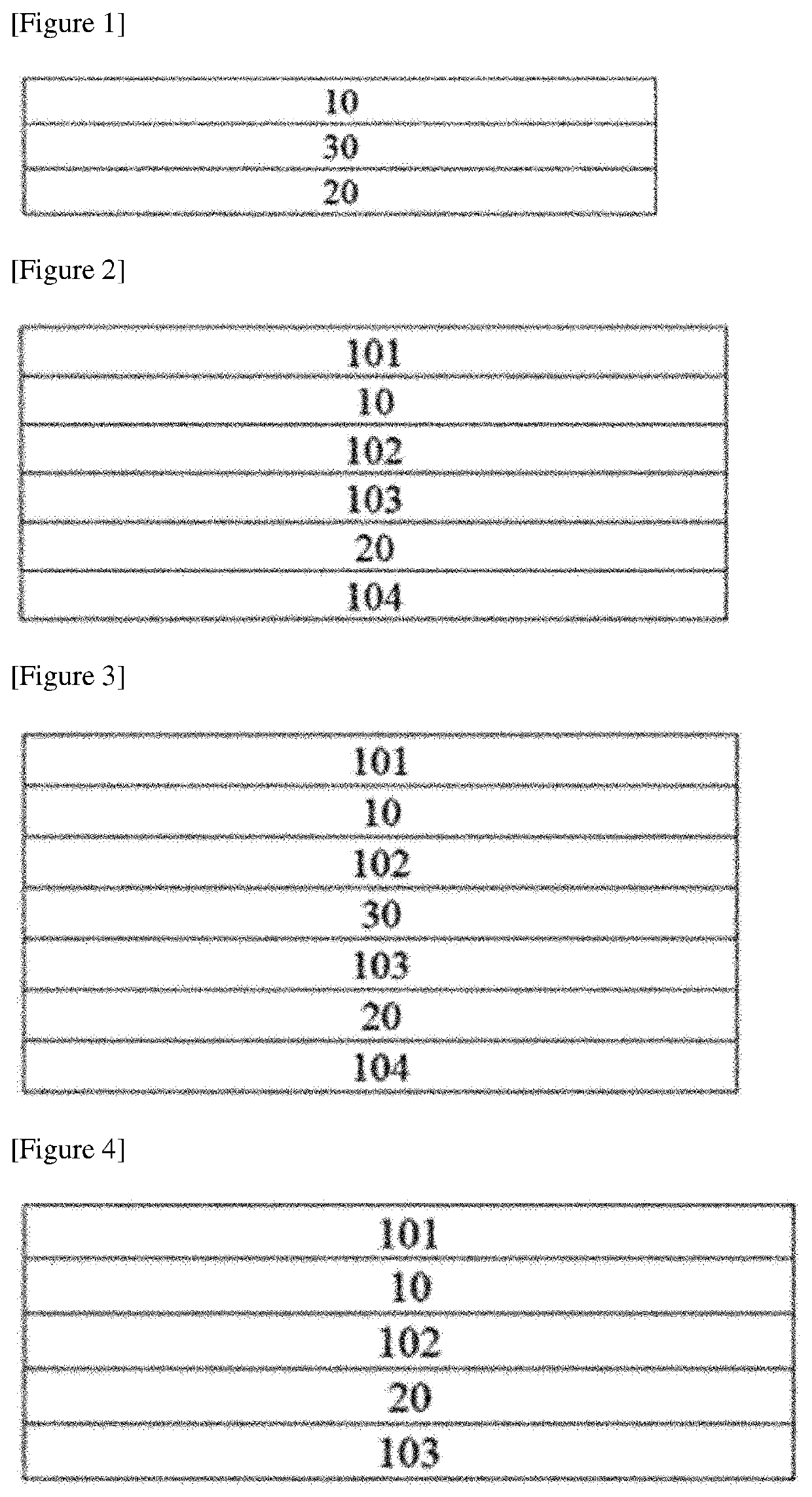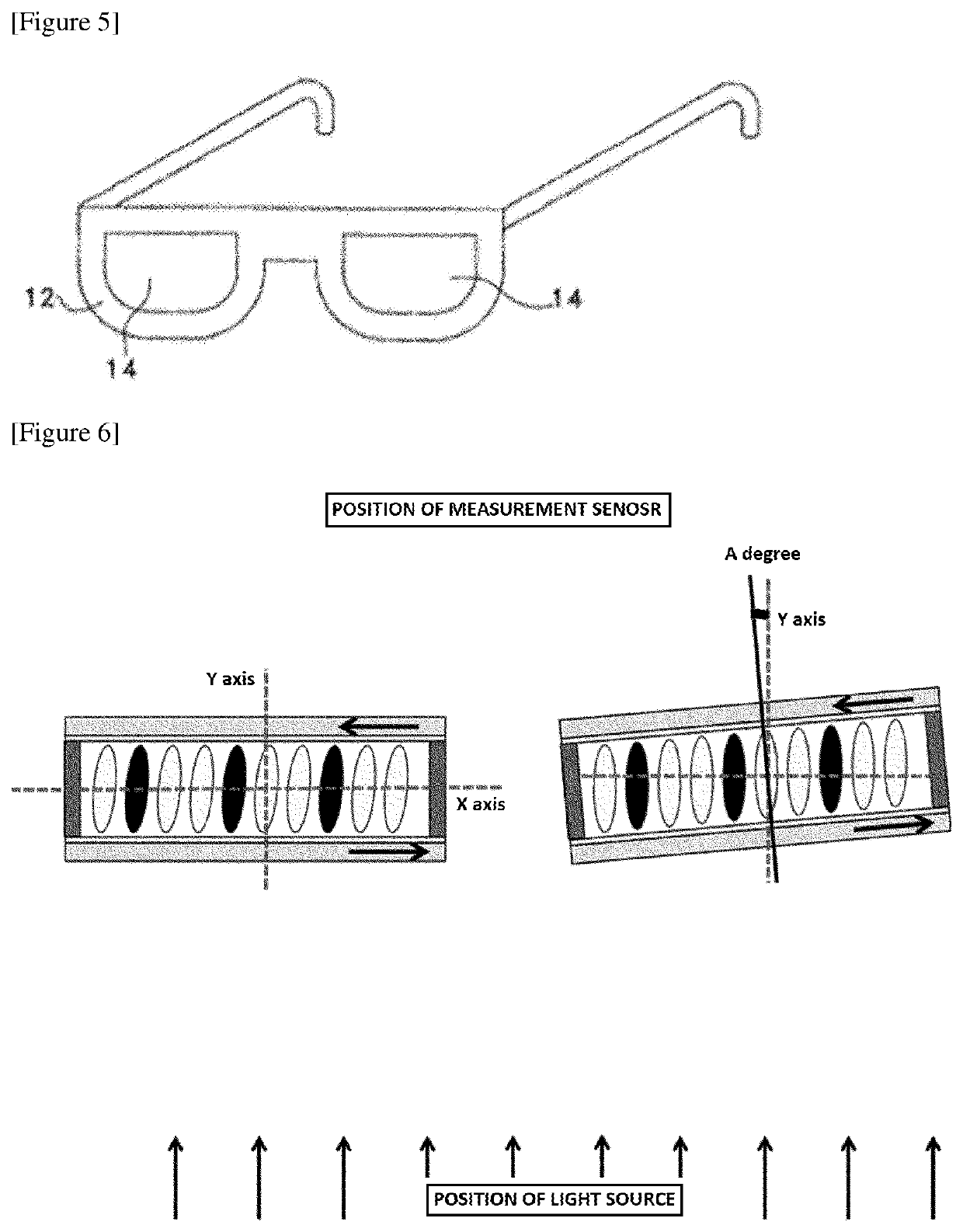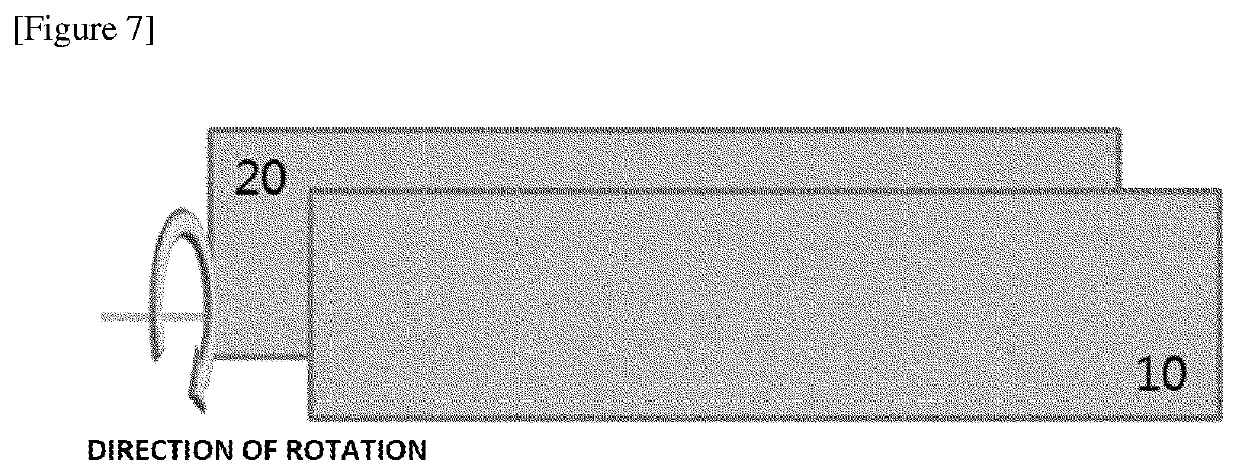Transmittance-variable device
a variable device and transmittance technology, applied in the direction of door/window protective devices, instruments, spectales/goggles, etc., can solve the problems of deterioration of contrast ratios (cr), and achieve high transmittance, high shielding rate, and high contrast ratio
- Summary
- Abstract
- Description
- Claims
- Application Information
AI Technical Summary
Benefits of technology
Problems solved by technology
Method used
Image
Examples
example 1
[0104]A first GH cell was produced by forming a GH layer between two COP (cycloolefin polymer) films in which an ITO (indium tin oxide) electrode layer and a vertical alignment film were sequentially formed on the surface. Here, the cell gap of the GH cell was set to about 12 μm. Here, as the vertical alignment film, an alignment film having a pretilt angle of about 89 degrees was used. The alignment film was formed to a thickness of about 200 nm by coating a polyimide-based vertical alignment film on the ITO electrode layer by bar coating, holding the film at 130° C. for about 30 minutes and rubbing the film with a rubbing cloth, and the two COP films were laminated so that the rubbing directions were equal to each other. Also, the GH layer was formed by applying a GH mixture in which nematic liquid crystals having dielectric constant anisotropy of about −4.9 and refractive index anisotropy of about 0.132 as a liquid crystal compound and a black dye having a dichroic ratio of about...
example 2
[0105]The first and second GH cells were prepared in the same manner as in Example 1, except that an isotropic (poly(ethylene terephthalate)) film in which an ITO (indium tin oxide) electrode layer and a vertical alignment film were sequentially formed on the surface and a COP (cycloolefin polymer) film in which an ITO electrode layer and a vertical alignment film were sequentially formed on the surface and the plane phase difference for light having a wavelength of 550 nm was about 137.5 nm, were applied as the substrates upon producing the GH cells, and the cell gap was about 11 μm. Upon producing the GH cell, the slow axis of the COP film was 45 degrees with the optical axis when the liquid crystal host of the GH cell was horizontally oriented. Subsequently, the transmittance-variable device was produced by attaching the COP films of the first and second GH cells such that the slow axes of the respective films were horizontal. The device is of a type in which the liquid crystal h...
PUM
| Property | Measurement | Unit |
|---|---|---|
| wavelength | aaaaa | aaaaa |
| wavelength | aaaaa | aaaaa |
| pretilt angle | aaaaa | aaaaa |
Abstract
Description
Claims
Application Information
 Login to View More
Login to View More - R&D
- Intellectual Property
- Life Sciences
- Materials
- Tech Scout
- Unparalleled Data Quality
- Higher Quality Content
- 60% Fewer Hallucinations
Browse by: Latest US Patents, China's latest patents, Technical Efficacy Thesaurus, Application Domain, Technology Topic, Popular Technical Reports.
© 2025 PatSnap. All rights reserved.Legal|Privacy policy|Modern Slavery Act Transparency Statement|Sitemap|About US| Contact US: help@patsnap.com



